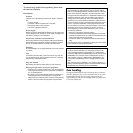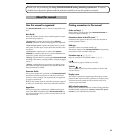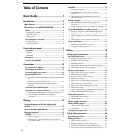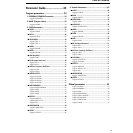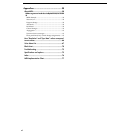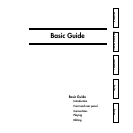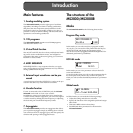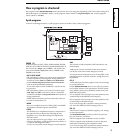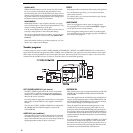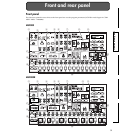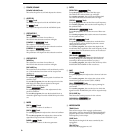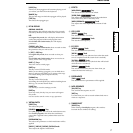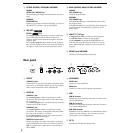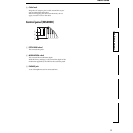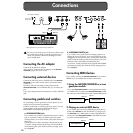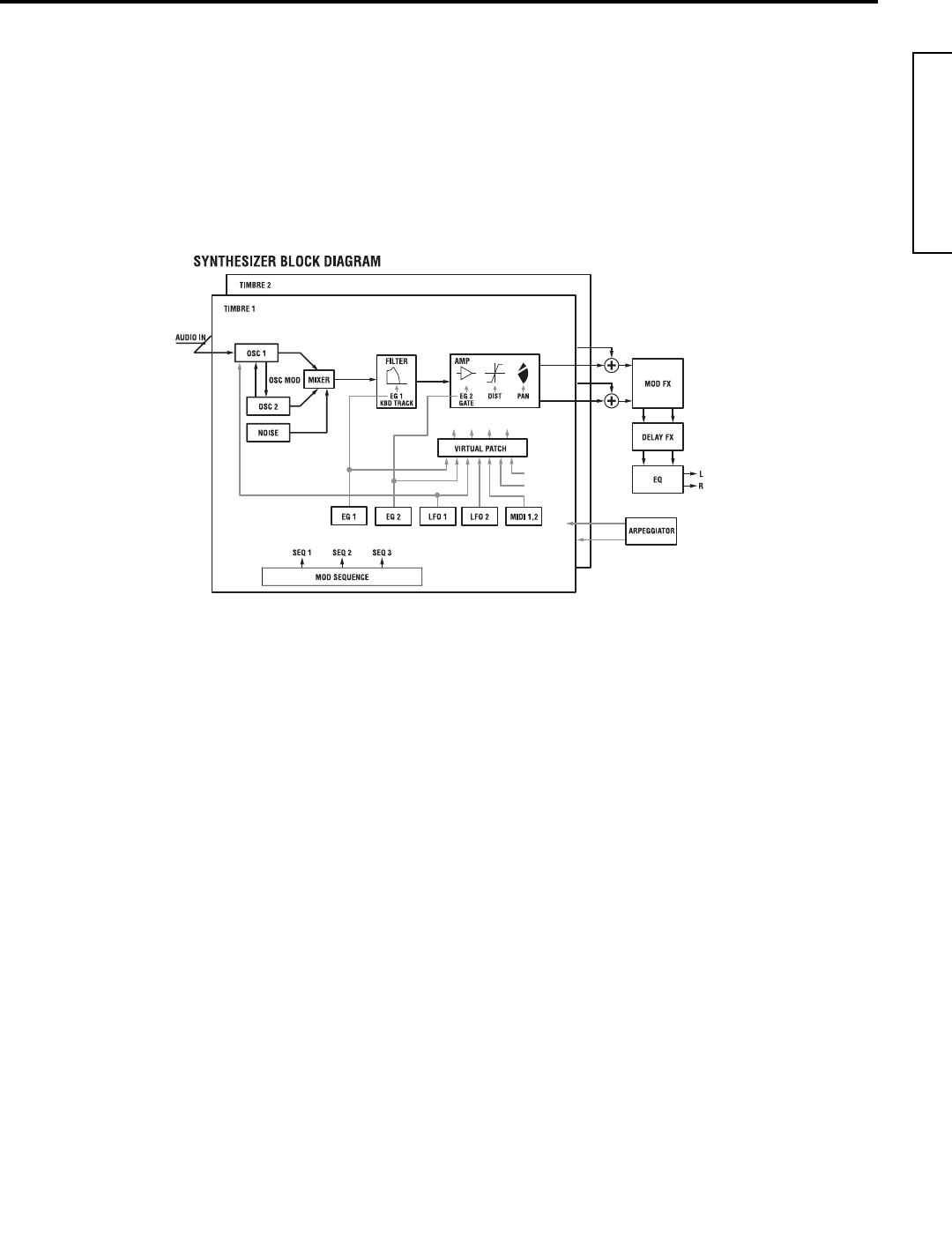
Basic Guide
3
IntroductionFront and rear panelConnectionsPlayingEditing
How a program is structured
The programs of the MS2000/MS2000R can be classified in one of two categories depending on the Voice mode setting (LCD
Edit mode Page 01A: COMMON “Mode”): synth programs whose “Mode” is Single/Dual/Split, and vocoder programs
whose “Mode” is Vocoder.
Synth programs
As shown in the diagram below, a synth program consists of timbres, effects, and an arpeggiator.
TIMBRE 1/2
A timbre consists of OSC1/OSC2/NOISE, MIXER, FILTER,
AMP, EG, LFO, VIRTUAL PATCH, and MOD SEQUENCE. If
the voice mode is Single, only TIMBRE 1 will sound. If the
voice mode is Dual or Split, both timbres TIMBRE 1 and
TIMBRE 2 will sound.
OSC1/OSC2/NOISE
OSC1 (Oscillator 1) allows you to select from eight different
oscillator algorithms, including basic analog synthesizer
waveforms such as SAW and PWM, Cross Modulation,
and the DWGS (Digital Waveform Generator System)
used on the Korg DW-8000 synthesizer.
A waveform input from the AUDIO IN 1/2 jacks can also
be processed.
OSC2 (Oscillator 2) allows you to select from three types:
SAW, SQU, and TRI. It can also be used as a modulator
oscillator for the Sync or Ring modulation characteristic of
analog synthesizers.
NOISE (Noise Generator) produces white noise. This can
be used for sound effects, etc.
MIXER
Here you can adjust the levels of OSC1, OSC2 and NOISE,
and send the combined signal to the FILTER.
FILTER
The FILTER cuts or emphasizes frequency components of
the signal from the oscillator, thus adjusting the tone
(brightness, etc.). These filter settings will significantly
affect the sound.
You can select from four types of filter: –12 or –24 dB/oct
LPF (Low Pass Filter), –12 dB/oct BPF (Band Pass Filter), or
–12 dB/oct HPF (High Pass Filter).
Use EG1 to create time-variant changes in cutoff frequency.
AMP
This consists of AMP (Amplifier), DIST (Distortion), and
PAN (Panpot).
AMP sets the volume, and PAN sets the stereo location.
Use EG2 to create time-variant changes in volume.
You can produce hard\harsh tones by turning DIST on. By
adjusting the filter cutoff and resonance, strong effects can
be produced.
EG1/2
An EG (Envelope Generator) applies a time-variant change
to a sound parameter.
On the MS2000/MS2000R, there are two EG’s for each tim-
bre. Each EG consists of four parameters: ATTACK (attack
time), DECAY (decay time), SUSTAIN (sustain level), and
RELEASE (release time).
EG1 is assigned as the envelope source that produces time-
variant change in the FILTER cutoff frequency.
EG2 is assigned as the envelope source that produces time-
variant change in the AMP volume.
If you wish to assign EG1 and EG2 to other parameters,
you can make VIRTUAL PATCH settings to do so.
LFO 1/2
The LFO (Low Frequency Oscillator) applies cyclic change
to sound parameters.
The MS2000/MS2000R provides two LFO’s for each tim-
bre, each with four waveforms.
LFO1 is assigned as the modulation source for OSC1.
LFO2 is assigned as the modulation source for the pitch
modulation controlled by the modulation wheel.
If you wish to assign LFO1 and LFO2 to other parameters,
you can make VIRTUAL PATCH settings to do so.
Velocity
KBD Track
Free Assign
Free Assign
(in the case of Dual/Split)




